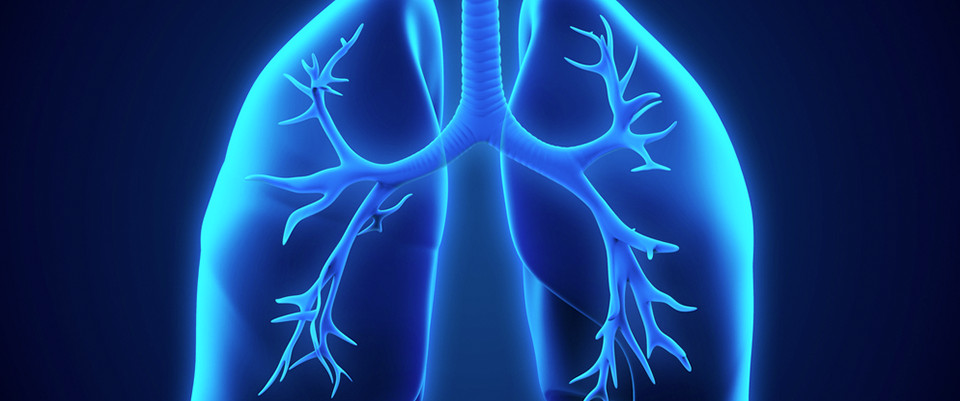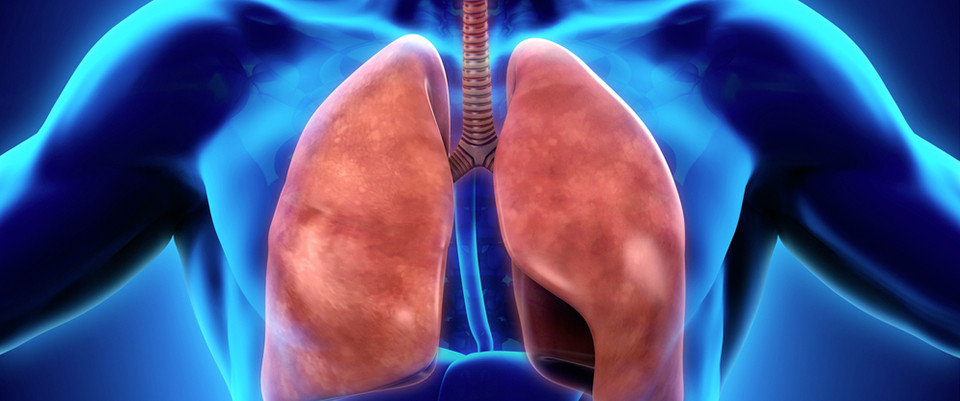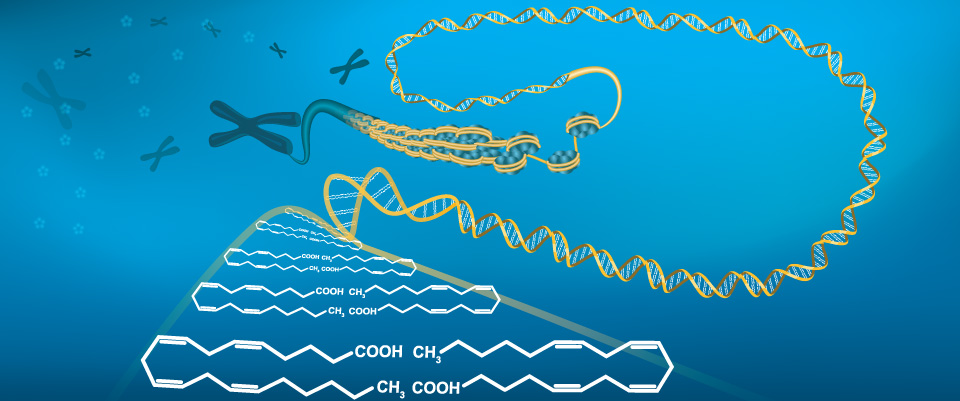PubMed
Succinate Accumulation Is Associated with a Shift of Mitochondrial Respiratory Control and HIF-1α Upregulation in PTEN Negative Prostate Cancer Cells.
Related Articles
Succinate Accumulation Is Associated with a Shift of Mitochondrial Respiratory Control and HIF-1α Upregulation in PTEN Negative Prostate Cancer Cells.
Int J Mol Sci. 2018 Jul 21;19(7):
Authors: Weber A, Klocker H, Oberacher H, Gnaiger E, Neuwirt H, Sampson N, Eder IE
Abstract
The idea of using metabolic aberrations as targets for diagnosis or therapeutic intervention has recently gained increasing interest. In a previous study, our group discovered intriguing differences in the oxidative mitochondrial respiration capacity of benign and prostate cancer (PCa) cells. In particular, we found that PCa cells had a higher total respiratory activity than benign cells. Moreover, PCa cells showed a substantial shift towards succinate-supported mitochondrial respiration compared to benign cells, indicating a re-programming of respiratory control. This study aimed to investigate the role of succinate and its main plasma membrane transporter NaDC3 (sodium-dependent dicarboxylate transporter member 3) in PCa cells and to determine whether targeting succinate metabolism can be potentially used to inhibit PCa cell growth. Using high-resolution respirometry analysis, we observed that ROUTINE respiration in viable cells and succinate-supported respiration in permeabilized cells was higher in cells lacking the tumor suppressor phosphatase and tensin-homolog deleted on chromosome 10 (PTEN), which is frequently lost in PCa. In addition, loss of PTEN was associated with increased intracellular succinate accumulation and higher expression of NaDC3. However, siRNA-mediated knockdown of NaDC3 only moderately influenced succinate metabolism and did not affect PCa cell growth. By contrast, mersalyl acid-a broad acting inhibitor of dicarboxylic acid carriers-strongly interfered with intracellular succinate levels and resulted in reduced numbers of PCa cells. These findings suggest that blocking NaDC3 alone is insufficient to intervene with altered succinate metabolism associated with PCa. In conclusion, our data provide evidence that loss of PTEN is associated with increased succinate accumulation and enhanced succinate-supported respiration, which cannot be overcome by inhibiting the succinate transporter NaDC3 alone.
PMID: 30037119 [PubMed - in process]
Phospholipase A2 activity during the replication cycle of the flavivirus West Nile virus.
Related Articles
Phospholipase A2 activity during the replication cycle of the flavivirus West Nile virus.
PLoS Pathog. 2018 04;14(4):e1007029
Authors: Liebscher S, Ambrose RL, Aktepe TE, Mikulasova A, Prier JE, Gillespie LK, Lopez-Denman AJ, Rupasinghe TWT, Tull D, McConville MJ, Mackenzie JM
Abstract
Positive-sense RNA virus intracellular replication is intimately associated with membrane platforms that are derived from host organelles and comprised of distinct lipid composition. For flaviviruses, such as West Nile virus strain Kunjin virus (WNVKUN) we have observed that these membrane platforms are derived from the endoplasmic reticulum and are rich in (at least) cholesterol. To extend these studies and identify the cellular lipids critical for WNVKUN replication we utilized a whole cell lipidomics approach and revealed an elevation in phospholipase A2 (PLA2) activity to produce lyso-phosphatidylcholine (lyso-PChol). We observed that the PLA2 enzyme family is activated in WNVKUN-infected cells and the generated lyso-PChol lipid moieties are sequestered to the subcellular sites of viral replication. The requirement for lyso-PChol was confirmed using chemical inhibition of PLA2, where WNVKUN replication and production of infectious virus was duly affected in the presence of the inhibitors. Importantly, we could rescue chemical-induced inhibition with the exogenous addition of lyso-PChol species. Additionally, electron microscopy results indicate that lyso-PChol appears to contribute to the formation of the WNVKUN membranous replication complex (RC); particularly affecting the morphology and membrane curvature of vesicles comprising the RC. These results extend our current understanding of how flaviviruses manipulate lipid homeostasis to favour their own intracellular replication.
PMID: 29709018 [PubMed - indexed for MEDLINE]
Sirt4 is a mitochondrial regulator of metabolism and lifespan in Drosophila melanogaster.
Related Articles
Sirt4 is a mitochondrial regulator of metabolism and lifespan in Drosophila melanogaster.
Proc Natl Acad Sci U S A. 2018 02 13;115(7):1564-1569
Authors: Wood JG, Schwer B, Wickremesinghe PC, Hartnett DA, Burhenn L, Garcia M, Li M, Verdin E, Helfand SL
Abstract
Sirtuins are an evolutionarily conserved family of NAD+-dependent deacylases that control metabolism, stress response, genomic stability, and longevity. Here, we show the sole mitochondrial sirtuin in Drosophila melanogaster, Sirt4, regulates energy homeostasis and longevity. Sirt4 knockout flies have a short lifespan, with increased sensitivity to starvation and decreased fertility and activity. In contrast, flies overexpressing Sirt4 either ubiquitously or specifically in the fat body are long-lived. Despite rapid starvation, Sirt4 knockout flies paradoxically maintain elevated levels of energy reserves, including lipids, glycogen, and trehalose, while fasting, suggesting an inability to properly catabolize stored energy. Metabolomic analysis indicates several specific pathways are affected in Sirt4 knockout flies, including glycolysis, branched-chain amino acid metabolism, and impaired catabolism of fatty acids with chain length C18 or greater. Together, these phenotypes point to a role for Sirt4 in mediating the organismal response to fasting, and ensuring metabolic homeostasis and longevity.
PMID: 29378963 [PubMed - indexed for MEDLINE]
Identification of the lipid biomarkers from plasma in idiopathic pulmonary fibrosis by Lipidomics.
Related Articles
Identification of the lipid biomarkers from plasma in idiopathic pulmonary fibrosis by Lipidomics.
BMC Pulm Med. 2017 Dec 06;17(1):174
Authors: Yan F, Wen Z, Wang R, Luo W, Du Y, Wang W, Chen X
Abstract
BACKGROUND: Idiopathic pulmonary fibrosis (IPF) is an irreversible interstitial pulmonary disease featured by high mortality, chronic and progressive course, and poor prognosis with unclear etiology. Currently, more studies have been focusing on identifying biomarkers to predict the progression of IPF, such as genes, proteins, and lipids. Lipids comprise diverse classes of molecules and play a critical role in cellular energy storage, structure, and signaling. The role of lipids in respiratory diseases, including cystic fibrosis, asthma and chronic obstructive pulmonary disease (COPD) has been investigated intensely in the recent years. The human serum lipid profiles in IPF patients however, have not been thoroughly understood and it will be very helpful if there are available molecular biomarkers, which can be used to monitor the disease progression or provide prognostic information for IPF disease.
METHODS: In this study, we performed the ultraperformance liquid chromatography coupled with quadrupole time of flight mass spectrometry (UPLC-QTOF/MS) to detect the lipid variation and identify biomarker in plasma of IPF patients. The plasma were from 22 IPF patients before received treatment and 18 controls.
RESULTS: A total of 507 individual blood lipid species were determined with lipidomics from the 40 plasma samples including 20 types of fatty acid, 159 types of glycerolipids, 221 types of glycerophospholipids, 47 types of sphingolipids, 46 types of sterol lipids, 7 types of prenol lipids, 3 types of saccharolipids, and 4 types of polyketides. By comparing the variations in the lipid metabolite levels in IPF patients, a total of 62 unique lipids were identified by statistical analysis including 24 kinds of glycerophoslipids, 30 kinds of glycerolipids, 3 kinds of sterol lipids, 4 kinds of sphingolipids and 1 kind of fatty acids. Finally, 6 out of 62 discriminating lipids were selected as the potential biomarkers, which are able to differentiate between IPF disease and controls with ROC analysis.
CONCLUSIONS: Our results provided vital information regarding lipid metabolism in IPF patients and more importantly, a few potentially promising biomarkers were firstly identified which may have a predictive role in monitoring and diagnosing IPF disease.
PMID: 29212488 [PubMed - indexed for MEDLINE]
Diet-induced obesity and weight loss alter bile acid concentrations and bile acid-sensitive gene expression in insulin target tissues of C57BL/6J mice.
Related Articles
Diet-induced obesity and weight loss alter bile acid concentrations and bile acid-sensitive gene expression in insulin target tissues of C57BL/6J mice.
Nutr Res. 2017 Oct;46:11-21
Authors: La Frano MR, Hernandez-Carretero A, Weber N, Borkowski K, Pedersen TL, Osborn O, Newman JW
Abstract
Bile acids (BAs) influence the metabolism of glucose, lipids, and energy expenditure. We hypothesized that BA concentrations and related gene expression would be altered in lean (low-fat diet fed; LFD) vs diet-induced obese (high-fat diet fed; HFD) groups of mice and that some detected changes would remain after weight loss in an HFD group switched to the LFD (SW). Taurine conjugates dominated the bile acid composition of the liver, epididymal white adipose tissue (eWAT), and hypothalamus, with the latter having lower levels (~95%, ~95%, and ~80%, respectively; P<.05). Plasma conjugated bile acids were elevated in the HFD relative to the LFD and SW animals. Total hepatic BA concentrations decreased in obese mice fed HFD, and levels returned to preobese levels in the SW group. Subtle changes in unconjugated bile acids were detected in the eWAT, hypothalamus, and muscle. Liver expression of a variety of enzymes involved in BA synthesis (eg, Cyp27a1, Acox2), BA transport (eg, Slc22a8), and BA-sensitive receptors (Fxr, Tgr5) were unchanged by HFD feeding but decreased with SW. Other hepatic enzymes were induced in the SW group (eg, Amacr and Bal). In eWAT, Cyp27a1 and Acox2 also declined in the SW group, whereas the HFD group showed reduced expression of BA transporters (eg, Abcc3), and changes in Fxr and Tgr5 were unclear. Therefore, although most detectable changes in BA metabolism associated with diet-induced obesity are reversed by diet-induced weight loss, some effects on BA composition, concentrations, and gene expression can persist after weight loss.
PMID: 29173647 [PubMed - indexed for MEDLINE]
Doses Lactobacillus reuteri depend on adhesive ability to modulate the intestinal immune response and metabolism in mice challenged with lipopolysaccharide.
Related Articles
Doses Lactobacillus reuteri depend on adhesive ability to modulate the intestinal immune response and metabolism in mice challenged with lipopolysaccharide.
Sci Rep. 2016 06 21;6:28332
Authors: Gao K, Liu L, Dou X, Wang C, Liu J, Zhang W, Wang H
Abstract
The objective of this study was to evaluate the modulatory effects of Lactobacillus reuteri ZJ617 and ZJ615, which have high and low adhesive abilities, respectively, and Lactobacillus rhamnosus GG (LGG) on immune responses and metabolism in mice stimulated with lipopolysaccharide (LPS). Six C57BL/6 mice per group were orally inoculated with ZJ617, ZJ615 or LGG for one week (1 × 10(8) CFU/mouse) and i.p. injected with LPS (10 mg/kg) for 24 h. Compared with the LPS stimulation group, ZJ615, ZJ617 and LGG significantly decreased TNF-α levels in the sera of mice stimulated by LPS. ZJ615 and LGG significantly down-regulated mRNA levels of cytokines and Toll-like receptors, and suppressed activation of MAPK and NF-κB signaling, while ZJ617 up-regulated anti-inflammatory cytokine IL-10 mRNA levels in the ilea of mice stimulated by LPS. Correlation analysis confirmed that adhesive ability is relative with the immunomodulation in the ilea of mice. There were 24, 7 and 10 metabolites and 10, 9 and 8 major metabolic pathways with significant differences (VIP > 1, P < 0.05) between the LPS and ZJ617 + LPS groups, the LPS and ZJ615 + LPS groups, and the ZJ617 + LPS and ZJ615 + LPS groups, respectively. The results indicated that both ZJ617 and ZJ615 could modulate the intestinal immune responses and metabolism in LPS-stimulated mice.
PMID: 27323686 [PubMed - indexed for MEDLINE]
Can Metabolic Profiles Be Used as a Phenotypic Readout of the Genome to Enhance Precision Medicine?
Related Articles
Can Metabolic Profiles Be Used as a Phenotypic Readout of the Genome to Enhance Precision Medicine?
Clin Chem. 2016 05;62(5):676-8
Authors: Contrepois K, Liang L, Snyder M
PMID: 26960666 [PubMed - indexed for MEDLINE]
metabolomics; +22 new citations
22 new pubmed citations were retrieved for your search.
Click on the search hyperlink below to display the complete search results:
metabolomics
These pubmed results were generated on 2018/07/24PubMed comprises more than millions of citations for biomedical literature from MEDLINE, life science journals, and online books.
Citations may include links to full-text content from PubMed Central and publisher web sites.
MoDentify: phenotype-driven module identification in metabolomics networks at different resolutions.
MoDentify: phenotype-driven module identification in metabolomics networks at different resolutions.
Bioinformatics. 2018 Jul 19;:
Authors: Do KT, Rasp DJN, Kastenmüller G, Suhre K, Krumsiek J
Abstract
Summary: Associations of metabolomics data with phenotypic outcomes are expected to span functional modules, which are defined as sets of correlating metabolites that are coordinately regulated. Moreover, these associations occur at different scales, from entire pathways to only a few metabolites; an aspect that has not been addressed by previous methods. Here we present MoDentify, a free R package to identify regulated modules in metabolomics networks at different layers of resolution. Importantly, MoDentify shows higher statistical power than classical association analysis. Moreover, the package offers direct interactive visualization of the results in Cytoscape. We present an application example using complex, multifluid metabolomics data. Due to its generic character, the method is widely applicable to other types of data.
Availability and Implementation: https://github.com/krumsieklab/MoDentify (vignette includes detailed workflow).
Supplementary Information: Supplementary materials are available at Bioinformatics online.
PMID: 30032270 [PubMed - as supplied by publisher]
Human exposure to polycyclic aromatic hydrocarbons: Metabolomics perspective.
Human exposure to polycyclic aromatic hydrocarbons: Metabolomics perspective.
Environ Int. 2018 Jul 19;119:466-477
Authors: Gao P, da Silva E, Hou L, Denslow ND, Xiang P, Ma LQ
Abstract
Polycyclic aromatic hydrocarbons (PAHs) are organic contaminants exhibiting carcinogenic toxicity. They are widespread in the environment, especially in urban areas. Humans are exposed to PAHs via inhalation, ingestion and dermal contact. Though much research has investigated their toxicity, little is known regarding the metabolic responses in humans after exposing to PAHs. However, those studies are important since PAHs become carcinogenic after metabolic activation by humans as indirect-acting carcinogens. As such, it is important to study their metabolism in humans based on metabolomics analysis. The goal of metabolomics study is to obtain a comprehensive view of metabolic reactions in humans after exposing to PAHs to better control the underlying metabolisms and reduce their genotoxicity. This article reviewed the biomarkers, analytical techniques including nuclear magnetic resonance and mass spectrometry, big data multivariate statistical analysis, and animal models that have been utilized to better understand the biological effects of PAHs, PAH-derivatives, and their metabolites and biotransformation products on humans.
PMID: 30032012 [PubMed - as supplied by publisher]
Dose-dependent target diversion of Danhong injection on the Glu-GLT-1/Gly-GlyRα dynamic balance module of cerebral ischemia.
Dose-dependent target diversion of Danhong injection on the Glu-GLT-1/Gly-GlyRα dynamic balance module of cerebral ischemia.
Pharmacol Res. 2018 Jul 19;:
Authors: Xu W, Zhang Y, Yu Y, Li B, Liu J, Wang P, Wu H, Liu Q, Wei Z, Xiao H, Wang Z
Abstract
Function-oriented modular structure analysis is a great challenge in module-based pharmacological studies. A strategy to uncover target-target interaction (TTI) and dynamic balance regularity (DBR) was established to discover the structural factors influencing modular functions and explore the mechanism of Danhong injection (DHI) in treating cerebral ischemia. The dose-related metabolic features of DHI intervention were investigated using metabolomics and modular pharmacology. The findings indicated that Glu/Gly was a biomarker and Glu-GLT-1/Gly-GlyRα was the core unit regulated by DHI. Gly and Glu displayed opposite patterns and functional roles, representing intra-modular balance. GlyRα was identified as the upstream target and GLT-1 as the downstream target by inhibiting or activating GlyRα, indicating that DHI has two dose-dependent regulatory modes. GlyRα was the major target at low doses, while GLT-1 was activated as the dominant target as doses accumulated. Our study reveals that target-target interaction and dynamic balance regularity are the key factors influencing modular functions, which is a promising breakthrough for module-based pharmacological studies.
PMID: 30031913 [PubMed - as supplied by publisher]
Supplementing phytogenic compounds or autolyzed yeast modulates ruminal biogenic amines and plasma metabolome in dry cows experiencing subacute ruminal acidosis.
Supplementing phytogenic compounds or autolyzed yeast modulates ruminal biogenic amines and plasma metabolome in dry cows experiencing subacute ruminal acidosis.
J Dairy Sci. 2018 Jul 18;:
Authors: Humer E, Kröger I, Neubauer V, Schedle K, Reisinger N, Zebeli Q
Abstract
Subacute ruminal acidosis (SARA) causes ruminal dysbiosis, thereby increasing the risk of systemic metabolic disorders in cattle. We recently showed that supplementation with phytogenic compounds (PHY) or autolyzed yeast (AY) counteracted negative effects of SARA by improving ruminal pH and microbiome. This study investigated the effects of an intermittent SARA challenge on the ruminal concentration of biogenic amines (BA) and lipopolysaccharides (LPS), as well as on the blood metabolome. We also evaluated effects of PHY and AY on the latter variables. Eight rumen-cannulated nonlactating Holstein cows were arranged in an incomplete 4 × 3 Latin square design with 4 experimental runs and 3 treatment groups. During each run, cows were switched from an all-forage diet (baseline) to an intermittent concentrate-challenge diet with a forage:concentrate ratio of 35:65 (dry matter basis) to induce SARA for 1 (SARA1) or 2 (SARA2) wk, separated by 1 wk of forage-only feeding. The 3 treatment groups were no additive as control, PHY, or AY. During baseline, SARA1 and SARA2 rumen fluid samples were collected for analysis of BA and LPS. Blood samples were taken during baseline and SARA1 for a targeted metabolomics approach. High-concentrate feeding caused a 9-fold increase in ruminal LPS during SARA1 and an 11-fold increase in SARA2 compared with the baseline. Elevated concentrations of ruminal BA were found during both SARA periods, with histamine showing the strongest increase during SARA1. Moreover, a decrease in phosphatidylcholines, lysophosphatidylcholines, sphingomyelines, and several AA in the blood during SARA1 were detected. Supplementation of PHY decreased concentrations of LPS (-43%), histamine (-66%), pyrrolidine (-38%), and spermine (-54%) in SARA1 and cadaverine in SARA2 (-50%). Moreover, cows that received PHY had higher concentrations of cholesterol (+26%), several AA, and phosphatidylcholines in SARA1 compared with control cows. For AY, decreases in ruminal ethanolamine (-21%), methylamine (-52%), histamine (-54%), spermidine (-44%), and spermine (-80%) in SARA1 were observed, whereas in the blood an increase in tryptophan was noticed. In conclusion, the SARA was associated with markedly increased concentrations of LPS and BA in the rumen fluid and undesirable shifts in the plasma metabolome. Supplementation of PHY and AY counteracted some of these changes and therefore may help in attenuating negative effects of high-concentrate feeding in dairy cattle.
PMID: 30031584 [PubMed - as supplied by publisher]
metabolomics; +21 new citations
21 new pubmed citations were retrieved for your search.
Click on the search hyperlink below to display the complete search results:
metabolomics
These pubmed results were generated on 2018/07/22PubMed comprises more than millions of citations for biomedical literature from MEDLINE, life science journals, and online books.
Citations may include links to full-text content from PubMed Central and publisher web sites.
metabolomics; +21 new citations
21 new pubmed citations were retrieved for your search.
Click on the search hyperlink below to display the complete search results:
metabolomics
These pubmed results were generated on 2018/07/22PubMed comprises more than millions of citations for biomedical literature from MEDLINE, life science journals, and online books.
Citations may include links to full-text content from PubMed Central and publisher web sites.
Highly Accurate Detection and Identification Methodology of Xenobiotic Metabolites Using Stable Isotope Labeling, Data Mining Techniques, and Time-Dependent Profiling Based on LC/HRMS/MS.
Highly Accurate Detection and Identification Methodology of Xenobiotic Metabolites Using Stable Isotope Labeling, Data Mining Techniques, and Time-Dependent Profiling Based on LC/HRMS/MS.
Anal Chem. 2018 Jul 19;:
Authors: Takahashi M, Izumi Y, Iwahashi F, Nakayama Y, Iwakoshi M, Nakao M, Yamato S, Fukusaki E, Bamba T
Abstract
A generally applicable method to discover xenobiotic metabolites is important to safely and effectively develop xenobiotics. We propose an advanced method to detect and identify comprehensive xenobiotic metabolites using stable isotope labeling, liquid chromatography coupled with benchtop quadrupole Orbitrap high-resolution tandem mass spectrometry (LC/HRMS/MS), data mining techniques (alignment, peak picking, and paired-peaks filtering), in silico metabolism prediction, and time-dependent profiling. The LC/HRMS analysis was carried out using Arabidopsis T87 cultured cells treated with unlabeled or with 13C- or 2H-labeled 2,4-dichlorophenoxyacetic acid (2,4-D). Paired-peak filtering enabled the accurate detection of 83 candidates for 2,4-D metabolites without any false positive peaks derived from solvents or the biological matrix. We confirmed 10 previously reported 2,4-D metabolites and identified 16 novel 2,4-D metabolites. Our method provides accurate detection and identification of comprehensive xenobiotic metabolites and represents a potentially useful tool for elucidating xenobiotic metabolism.
PMID: 30024726 [PubMed - as supplied by publisher]
The integration of LC-MS and NMR for the analysis of low molecular weight trace analytes in complex matrices.
The integration of LC-MS and NMR for the analysis of low molecular weight trace analytes in complex matrices.
Mass Spectrom Rev. 2018 Jul 19;:
Authors: Gathungu RM, Kautz R, Kristal BS, Bird SS, Vouros P
Abstract
This review discusses the integration of liquid chromatography (LC), mass spectrometry (MS), and nuclear magnetic resonance (NMR) in the comprehensive analysis of small molecules from complex matrices. We first discuss the steps taken toward making the three technologies compatible, so as to create an efficient analytical platform. The development of online LC-MS-NMR, highlighted by successful applications in the profiling of highly concentrated analytes (LODs 10 μg) is discussed next. This is followed by a detailed overview of the alternative approaches that have been developed to overcome the challenges associated with online LC-MS-NMR that primarily stem from the inherently low sensitivity of NMR. These alternative approaches include the use of stop-flow LC-MS-NMR, loop collection of LC peaks, LC-MS-SPE-NMR, and offline NMR. The potential and limitations of all these approaches is discussed in the context of applications in various fields, including metabolomics and natural product discovery.
PMID: 30024655 [PubMed - as supplied by publisher]
Effects of cold exposure on metabolites in brown adipose tissue of rats.
Effects of cold exposure on metabolites in brown adipose tissue of rats.
Mol Genet Metab Rep. 2018 Jun;15:36-42
Authors: Hiroshima Y, Yamamoto T, Watanabe M, Baba Y, Shinohara Y
Abstract
Brown adipose tissue (BAT) plays an important role in regulation of energy expenditure while adapting to a cold environment. BAT thermogenesis depends on uncoupling protein 1 (UCP1), which is expressed in the inner mitochondrial membranes of BAT. Gene expression profiles induced by cold exposure in BAT have been studied, but the metabolomic biological pathway that contributes to the activation of thermogenesis in BAT remains unclear. In this study, we comprehensively compared the relative levels of metabolites between the BAT of rats kept at room temperature (22 °C) and of those exposed to a cold temperature (4 °C) for 48 h using capillary electrophoresis (CE) time-of-flight mass spectrometry (TOFMS) and liquid chromatography (LC)-TOFMS. We identified 218 metabolites (137 cations and 81 anions) by CE-TOFMS and detected 81 metabolites (47 positive and 34 negative) by LC-TOFMS in BAT. We found that cold exposure highly influenced the BAT metabolome. We showed that the cold environment lead to lower levels of glycolysis and gluconeogenesis intermediates and higher levels of the tricarboxylic acid (TCA) cycle metabolites, fatty acids, and acyl-carnitine metabolites than control conditions in the BAT of rats. These results indicate that glycolysis and β-oxidation of fatty acids in BAT are positive biological pathways that contribute to the activation of thermogenesis by cold exposure, thereby facilitating the generation of heat by UCP1. These data provide useful information for understanding the basal metabolic functions of BAT thermogenesis in rats in response to cold exposure.
PMID: 30023288 [PubMed]
Storage conditions modulate the metabolomic profile of a black raspberry nectar with minimal impact on bioactivity.
Related Articles
Storage conditions modulate the metabolomic profile of a black raspberry nectar with minimal impact on bioactivity.
Food Funct. 2018 Jul 19;:
Authors: Teegarden MD, Knobloch TJ, Weghorst CM, Cooperstone JL, Peterson DG
Abstract
Pre-clinical and clinical studies suggest black raspberries (BRBs) may inhibit the development of oral cancer. Lyophilized BRB powder is commonly used in these studies, but processed BRB products are more often consumed. The objective of this work was to understand how storage conditions influence the phytochemical profile and anti-proliferative activity of a BRB nectar beverage. Untargeted UHPLC-Q-TOF-MS based metabolomics analyses demonstrated that large chemical variation was introduced by storage above -20 °C over 60 days. However, minimal change in anti-proliferative activity was observed when stored nectar extracts were applied to SCC-83-01-82 premalignant oral epithelial cells. As proof of concept, cyanidin-3-O-rutinoside and its degradation product, protocatechuic acid, were administered in different ratios maintaining an equimolar dose, and anti-proliferative activity was maintained. This study shows the utility of metabolomics to profile global chemical changes in foods, while demonstrating that isolated phytochemicals do not explain the complete bioactivity of a complex food product.
PMID: 30022172 [PubMed - as supplied by publisher]
Accumulation of succinate controls activation of adipose tissue thermogenesis.
Related Articles
Accumulation of succinate controls activation of adipose tissue thermogenesis.
Nature. 2018 Jul 18;:
Authors: Mills EL, Pierce KA, Jedrychowski MP, Garrity R, Winther S, Vidoni S, Yoneshiro T, Spinelli JB, Lu GZ, Kazak L, Banks AS, Haigis MC, Kajimura S, Murphy MP, Gygi SP, Clish CB, Chouchani ET
Abstract
Thermogenesis by brown and beige adipose tissue, which requires activation by external stimuli, can counter metabolic disease1. Thermogenic respiration is initiated by adipocyte lipolysis through cyclic AMP-protein kinase A signalling; this pathway has been subject to longstanding clinical investigation2-4. Here we apply a comparative metabolomics approach and identify an independent metabolic pathway that controls acute activation of adipose tissue thermogenesis in vivo. We show that substantial and selective accumulation of the tricarboxylic acid cycle intermediate succinate is a metabolic signature of adipose tissue thermogenesis upon activation by exposure to cold. Succinate accumulation occurs independently of adrenergic signalling, and is sufficient to elevate thermogenic respiration in brown adipocytes. Selective accumulation of succinate may be driven by a capacity of brown adipocytes to sequester elevated circulating succinate. Furthermore, brown adipose tissue thermogenesis can be initiated by systemic administration of succinate in mice. Succinate from the extracellular milieu is rapidly metabolized by brown adipocytes, and its oxidation by succinate dehydrogenase is required for activation of thermogenesis. We identify a mechanism whereby succinate dehydrogenase-mediated oxidation of succinate initiates production of reactive oxygen species, and drives thermogenic respiration, whereas inhibition of succinate dehydrogenase supresses thermogenesis. Finally, we show that pharmacological elevation of circulating succinate drives UCP1-dependent thermogenesis by brown adipose tissue in vivo, which stimulates robust protection against diet-induced obesity and improves glucose tolerance. These findings reveal an unexpected mechanism for control of thermogenesis, using succinate as a systemically-derived thermogenic molecule.
PMID: 30022159 [PubMed - as supplied by publisher]
Menthol, a unique urinary volatile compound, is associated with chronic inflammation in interstitial cystitis.
Related Articles
Menthol, a unique urinary volatile compound, is associated with chronic inflammation in interstitial cystitis.
Sci Rep. 2018 Jul 18;8(1):10859
Authors: Shahid M, Lee MY, Yeon A, Cho E, Sairam V, Valdiviez L, You S, Kim J
Abstract
Chronic inflammation is a potential systemic risk factor for many bladder dysfunctions, including interstitial cystitis (IC). However, the underlying mechanism through which a healthy bladder protects itself from inflammatory triggers remains unknown. In this study, we identified odor compounds in urine obtained from IC patients and healthy controls. Using comprehensive solid-phase microextraction-gas chromatography-time-of-flight-mass spectrometry (SPME-GC-TOF-MS) profiling and bioinformatics, we found that levels of urinary volatile metabolites, such as menthol, were significantly reduced in IC patients, compared to healthy controls. In an attempt to understand the mechanistic meaning of our volatile metabolites data and the role of menthol in the immune system, we performed two independent experiments: (a) cytokine profiling, and (b) DNA microarray. Our findings suggest that lipopolysaccharide (LPS)-stimulated inflammatory events, such as the production and secretion of inflammatory cytokines (e.g., TNF-α, IL-6, and IL-1β) and the activation of NF-κB and associated proteins within a large signaling network (e.g., Akt, TLR1, TNFAIP3, and NF-κB), are suppressed by the presence of menthol. These findings broaden our knowledge on the role of urinary menthol in suppressing inflammatory events and provide potential new strategies for alleviating both the odor and inflammation associated with IC.
PMID: 30022124 [PubMed - in process]











